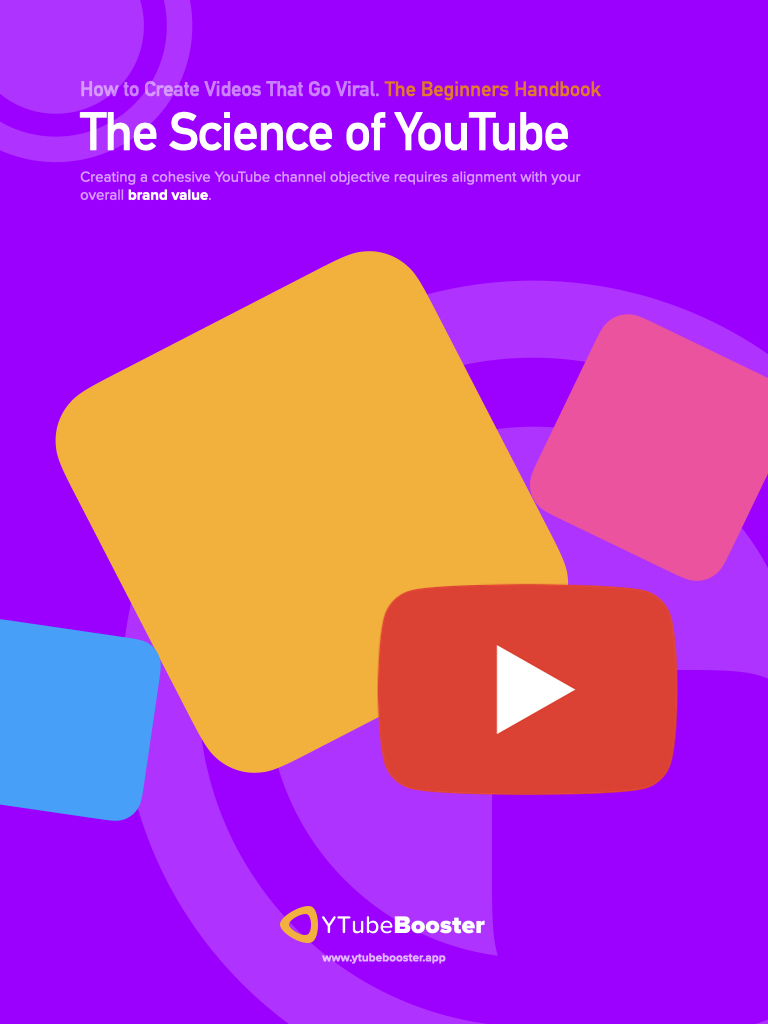Initially, the YouTube algorithm recommended videos that attracted the most views or clicks. This observation led to the new era of misplaced titles and thumbnails. As the trickery began to unfold on the eager audience, the user experience went down. YouTubers again had to know how to work differently to garner audience.
How does the YouTube algorithm hack work?
It began with optimizing for watch time.
In 2012 YouTube tinkered with its algorithm to watch for the time spent watching a particular video and the overall time spent on the platform. The algorithm gave preference to content that the audience wanted to watch. The retro effect of this change in perception led the creators to change their approach. They began to make shorter videos to retain the audience to watch it till the end. Some YouTubers did the exact opposite with the sole idea of increasing watch time. The YouTube algorithm did not react to these changes, and instead, it started to prompt the creators into making quality videos.
In 2015 YouTube changed tack again. It prioritized user satisfaction based on metrics like shares, likes, and dislikes. A whitepaper released by YouTube in 2016 stated the inner workings of its AI. The paper “Deep Neural Networks for YouTube Recommendations said that now the goal of YouTube was to find out what precisely each viewer wanted to watch online and not just the so many videos already watched by others. Watching YouTube videos was now going to be a personal experience.
YouTube began to censor dangerous content even uphold brand safety.
YouTube, over time, had to brush against a lot of content moderation issues. The algorithm recommends soon became a serious topic. The creators and the government were now on their toes.
YouTube stated that it did not want the spread of harmful information. In 2019, algorithm changes were enacted, which reduced borderline content consumption by 70%. The act states that marginal content must not violate community guidelines but is harmful or misleading. This state of an act enacted by YouTube had now become the nagging fear for creators. They became vulnerable to being caught in the crossfire of things due to changing community guidelines of YouTube.
How will the YouTube algorithm work in 2022 and beyond?
The YouTube algorithm again evolved to find the right video for the concerned viewer and deploy enticements to keep them coming back.
Analytically speaking, the YouTube algorithm is all about three slightly different and overlapping selection criteria.
One is the selective approach of the algorithm that decide the videos for the YouTube page.
Second, compile the results at any given point against a search.
Third, that selects the suggested videos for viewers to watch
How YouTube’s algorithm works?
YouTube uses a different ranking from ranking website signals to decide which videos to show people. Each video’s view count is a mix of personalization, performance and external factors. Each traffic source will always be slightly different.
How YouTube goes about its homepage algorithm.
The YouTube app on initiation throws up a cross-section of videos based on what the viewers are interested in watching
. This presentation of video options is the net result of three criteria; similar videos which are mostly viewed by the user. A generic compilation of videos recently viewed and videos most watched by other users from the same location.
Youtube presents the videos on the homepage by constantly updating specific metrics like click-through rate, average view timings, average percentage viewed, likes, dislikes, and viewer surveys. YouTube measures performance in this manner.
The videos presented to YouTube audiences are formulated based on their past platform behaviour. Watch history is one variable through which the YouTube algorithm understands the preference of its viewers. A person’s change of interest in content over time will also reflect similar videos made available by the YouTube algorithm.
How YouTube plots its suggested video algorithm.
After a person has consistently used YouTube, the algorithm has a fair idea of what the concerned viewer will like to watch on a particular day. This insight helps the algorithm present video suggestions on the right side of the screen. Performance and personalization apart, the algorithm recommends
Videos that the viewers formerly watched together.
Videos that are topically related.
Videos watched by the user in times bygone.
Creators have an advantage if they can look into google analytics to find out what their audience has been looking up lately. Such insight can help the YouTubers formulate their videos based on similar topics to retain their viewership. Making a sequel would be a tried and tested technique if a video becomes vastly popular.
How YouTube projects its search algorithm.
YouTube is a video platform and a search engine; hence an essential knowledge of SEO goes a long way. While you search for a particular video, the algorithm will rank the search results specifically. So how to get your video up the rank during a search.
Keywords: Hysteroscopy has two words that you must type together for such videos to show up. The algorithm relies on it to display the results on the ranking scale during a search. It all depends on the metadata in your video. Metadata is data that describes or identifies other pieces of information. They can be descriptive, structural, administrative, and even statistical.
Performance: Once the kind of video you are looking for is displayed, the algorithm tests the results by showing it to diverse people. The algorithm gathers the popularity quotient of such videos through metrics like click-through rate, watch time, likes, survey feedback, etc. More people looking and liking your video means it will climb up the SERPs.
Do your keyword research.
There is no human element involved in watching and ranking your video on behalf of YouTube. The YouTube algorithm does it all. It studies the metadata within your video or genres and relates the data to the kind of audience who would want to watch it. The challenge here is to describe your video to the algorithm in the best possible accurate and concise language for other people looking for similar content.
Now YouTube is a search engine. Hence conducting keyword research shouldn’t be different from a website or a blog post using free tools like YTubeBooster, SEMrush or Google Adwords.
Once you have zeroed in your primary keywords, use them in the following places
use them in the video’s filename
Use them creatively in the video’s title
Use them in the YouTube video description
Use them in the video’s script by uploading an SRT file in its subtitles and closed captions.
In the video tags but by misspelling your keywords or channel name
Make your thumbnail play the bagpiper to lure views.
Thumbnail should be enticing enough but never out of context. It should be a custom one across every video within your channel. To be clicked upon, a catchy and tempting line should complement your thumbnail to make it eye-catching. So to draw your audience beyond your thumbnail, it has to be very attractive. Go about making one that quickly helps your viewers imply your content from your thumbnail looks.
Design Tips:-
Create or Choose an image (from free sites such as Unsplash or pexels) that represents your video
Choose colours and templates that match your brand
Choose easy to read text
Write copy that best matches what your audience is looking for
The ideal size should be 1280 x 720 pixels
Keep people watching your video and all your videos.
Once someone clicks your video, provide elements that will make them watch and linger till the end. Use cards to flag other relevant videos. Introduce a strong CTA to manage your and other relevant videos. Use subscription watermarks with Creating a playlist of similar videos. Always try to make a video series to lure in more viewers.
Attract views from other sources
Sometimes the YouTube algorithm may not directly promote your video or channel; that is when external links and cross-promotion of your content on social media helps. The external linking strategy involving channel partnerships will decide the traffic drawn to your channel. More incoming traffic will automatically spike because of increased view duration and click-through rates. You can also effectively embed a video within your blog post to pull traffic to your video.
Engage with comments and other channels
You can exploit the community engagement tools on Hootsuite to ramp up great relation-building with your fan following. These days viewers feel more attached to their loved creators than reel-life heroes.
Give the people what they want.
The YouTube audience these days are far ahead of their predecessors. It is no more a seller but a buyers market of what has become of YouTube. People will not just consume any content. They want the content to be as per their interests. The YouTube algorithm also favours the content consumers by giving preference to content savoured by each user. Hence for content creators, quality content is the key.
Conclusion
Have a keen eye on Google trends and experiment to discover what is possibly changing about the YouTube algorithm. This way, you will be able to get feelers to adapt quickly as per changing norms and practices of YouTube.





